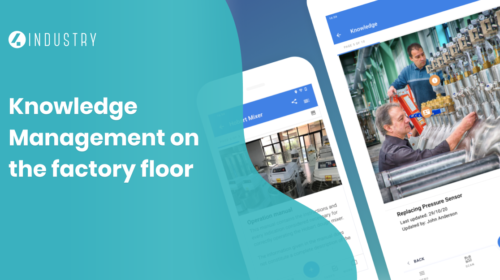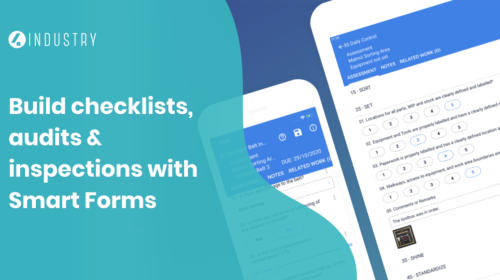
What is Preventive Maintenance Compliance (PMC)?
Discover everything you need to know about preventive maintenance compliance, its benefits, and how to implement it in manufacturing.

What is Preventive Maintenance Compliance?
Preventive maintenance compliance (PMC) is a maintenance metric and KPI that expresses how many scheduled preventive maintenance tasks have been completed over a certain period. It benchmarks the efficacy of PM programs and indicates how well PM schedules are being adhered to. It’s therefore a very important metric in improving a plant’s maintenance practices.
How preventive maintenance compliance is used in manufacturing
Preventive maintenance isn’t only an important aspect of manufacturing; it’s an important aspect of most people’s day-to-day life.
Let’s take cars as an example. Cars require a lot planned, routine maintenance: periodic inspections, oil changes, and so on.
Why? Well, humans have found out that equipment functions better and lives longer if it’s maintained on a regular basis; it’s actually more cost-efficient to invest in maintaining a piece of equipment than waiting for it to break down completely and then fixing it (reactive maintenance).
Factories have hundreds of assets that have to function properly as often as possible.
The stakes are high here: if a piece of equipment breaks down, the results can halt production, frustrate customers, and lose the factory a lot of money.
One solution to this is called preventive maintenance, which consists of tasks that aim to keep a machine functioning properly and decrease the chance if it breaking down.

Because there can be a lot of these tasks in a factory, maintenance teams set up preventive maintenance plans.
The fact that these exist, however, doesn’t mean that they’re always adhered to. Maintenance teams often have to take time out of their day to react to unexpected events, preventing them from doing their preventive maintenance tasks.
That’s just one reason for why preventive maintenance schedules don’t always work out the way they’re set up: there may be several things lacking in a PM strategy.
This is where preventive maintenance compliance comes in.
How is preventive maintenance compliance used?
Preventive maintenance compliance is a KPI that expresses how well a PM schedule is being followed. We’ll explore the exact way to calculate it further on, but it basically tells manufacturers how many of the total number of PM tasks are actually completed.
It’s important to emphasize that PMC is a tool and not a solution in itself; it’s an indicator that can help you discover the flaws in a PM strategy. We’ll explore some of these flaws and methods toward their improvement later in this article. First, let’s explore how PMC is calculated and what its limits are as a metric.
How to is preventive maintenance compliance calculated?
Calculating PMC is really quite easy. You first take the total amount of completed PM tasks over a certain period and divide that by the number of scheduled tasks.
Multiply the resulting number with 100, and you’ve got your PMC.
Remember: only scheduled PM tasks count here. Reactive maintenance tasks don’t apply here, and neither do unplanned PM tasks.

Let’s do a calculation ourselves as an example. Let’s say 85 tasks were scheduled over a period of 30 days and 62 of those were completed.
62 ÷ 85 = ~0,73, which equals a PMC of 73%.
Although that isn’t a bad result, it’s far below the world-class PMC percentage of 90%.
The limits of PMC
The downside of preventive maintenane compliance as a metric is that it doesn’t actually express how many PM tasks were completed on time; it just tells you how many were completed in a certain timeframe.
Why this matters? Well, the aim of PM in general is to prevent problems from happening by taking care of equipment in a timely way.
Every time a PM task is performed late, the chance of an important breakdown happening increases. An unmanageable backlog of tasks can even cause your preventive maintenance strategy to devolve into chaos.
This is the major limit of PMC: it can give you a wrong impression on the state of your preventive maintenance.
Remember that it’s not just important to complete a task; it should be completed in time as well, and getting in the habit of doing PM late is very risky.
A common way to compensate for this flaw is to use what’s called the 10% rule.
This only counts a PM as successfully completed when it’s executed within 10% of its total interval time. If a task occurs every 100 days, this means it should be done within 10 days of the due date.
Working this way makes PMC a significantly more reliable indicator of your PMs success.
Aiming for early completion furthermore prevents maintenance teams from being late due to unexpected events.
How do you improve preventive maintenance compliance?
There are several things that can underlie low preventive maintenance compliance, and several things one can do to improve.
Let’s explore these one at a time.
Ensure that your PM tasks are accurate
PM changes all the time and its important to not stick to outdated or inaccurate PM practices.
Some PM tasks may simply have become redundant because of new equipment, better parts, more effecient ways of working, and so on.
It’s therefore important to periodically evaluate if your PM tasks are still necessary and up to date. If your technicians start working with a better part, a certain PM task might still be relevant, although with a more extended interval.
When a task isn’t relevant at all anymore, your personnel is probably just going to skip it altogether, causing you to end up with a lower PMC percentge.
The solution is simple: Listen to your personnel and scrap any tasks that are redundant. This will make them feel heard and give you an accurate (and higher) PMC.
Simplify maintenance practices
Many PMs are often not completed on time (or at all) because they simply take too long to complete.
The solution, then, is quite obvious: make preventive maintenance easier to execute for your personnel.
There are several things you can do to bring this about. Investing in training is one, but it might also be a good idea to polish up and improve your maintenance procedures.
Switching over to a system of digital, mobile-enabled Knowledge Management enables your maintenance teams to access the information they need faster and thereby complete their tasks even quicker.
Reserve time for PM
It’s also advisable to reserve portions of time each week exclusively for preventive maintenance tasks.
This is a great way of ensuring that your maintenance teams have time for their tasks even if a big, unexpected breakdown occurs.
Go the extra mile
Manufacturers that are serious about preventive maintenance might want to go the extra mile and give their personnel overtime to execute tasks.
Hiring contractors specifically for PM work is also a way to ensure that all tasks are finished on time.
Curious about the manufacturing trends that are shaping the future?

Related Articles

Knowledge Management on the factory floor

Work on tasks from an easy-to-use Task Management system

